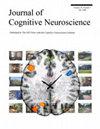瞳孔大小和眼球运动对年轻人和老年人努力程度的影响不同
IF 3.1
3区 医学
Q2 NEUROSCIENCES
引用次数: 0
摘要
脑力劳动的评估与神经认知和寿命领域的关系日益密切。瞳孔测量法是测量瞳孔大小的方法,常用于评估脑力劳动,但有其缺点。眼球运动分析可能是一种替代方法,但研究仅限于年轻成年人的简单和困难任务要求。对努力程度的测量必须对整个努力程度概况敏感,包括 "放弃 "努力投资,并能捕捉到不同年龄组的努力程度。目前的研究包括三项实验,在这三项实验中,年轻人(66 人)和老年人(44 人)分别聆听由背景咿呀声掩盖的语音,语音的信噪比各不相同,分别与简单、困难和不可能的语音理解相关。我们预计,对于容易和不可能理解的语音,个体会投入很少的精力(放弃),但对于困难的语音,个体会付出很大的努力。事实上,瞳孔大小在听懂难懂的语言时最大,而在听懂简单和不可能的语言时较小。相反,在两个年龄组中,随着语言遮蔽程度的增加,注视分散度都会降低。重要的是,在句子抵消后,当不同条件下的声音刺激相似时,困难说话时的注视分散性恢复到与简单说话相似的水平,而不可能说话时的注视分散性继续降低。这些研究结果表明,眼球运动的减少并不是声学因素的副产品,而是神经认知过程(不同于调节瞳孔大小的唤醒相关系统)在高任务要求下驱动眼球运动减少的结果。因此,目前的数据表明,在一个感官领域(听觉)的努力会对另一个感官领域(视觉)的不同功能特性产生不同的影响。本文章由计算机程序翻译,如有差异,请以英文原文为准。
Pupil Size and Eye Movements Differently Index Effort in Both Younger and Older Adults
The assessment of mental effort is increasingly relevant in neurocognitive and life span domains. Pupillometry, the measure of the pupil size, is often used to assess effort but has disadvantages. Analysis of eye movements may provide an alternative, but research has been limited to easy and difficult task demands in younger adults. An effort measure must be sensitive to the whole effort profile, including “giving up” effort investment, and capture effort in different age groups. The current study comprised three experiments in which younger (n = 66) and older (n = 44) adults listened to speech masked by background babble at different signal-to-noise ratios associated with easy, difficult, and impossible speech comprehension. We expected individuals to invest little effort for easy and impossible speech (giving up) but to exert effort for difficult speech. Indeed, pupil size was largest for difficult but lower for easy and impossible speech. In contrast, gaze dispersion decreased with increasing speech masking in both age groups. Critically, gaze dispersion during difficult speech returned to levels similar to easy speech after sentence offset, when acoustic stimulation was similar across conditions, whereas gaze dispersion during impossible speech continued to be reduced. These findings show that a reduction in eye movements is not a byproduct of acoustic factors, but instead suggest that neurocognitive processes, different from arousal-related systems regulating the pupil size, drive reduced eye movements during high task demands. The current data thus show that effort in one sensory domain (audition) differentially impacts distinct functional properties in another sensory domain (vision).
求助全文
通过发布文献求助,成功后即可免费获取论文全文。
去求助
来源期刊
CiteScore
5.30
自引率
3.10%
发文量
151
审稿时长
3-8 weeks
期刊介绍:
Journal of Cognitive Neuroscience investigates brain–behavior interaction and promotes lively interchange among the mind sciences.

 求助内容:
求助内容: 应助结果提醒方式:
应助结果提醒方式:


